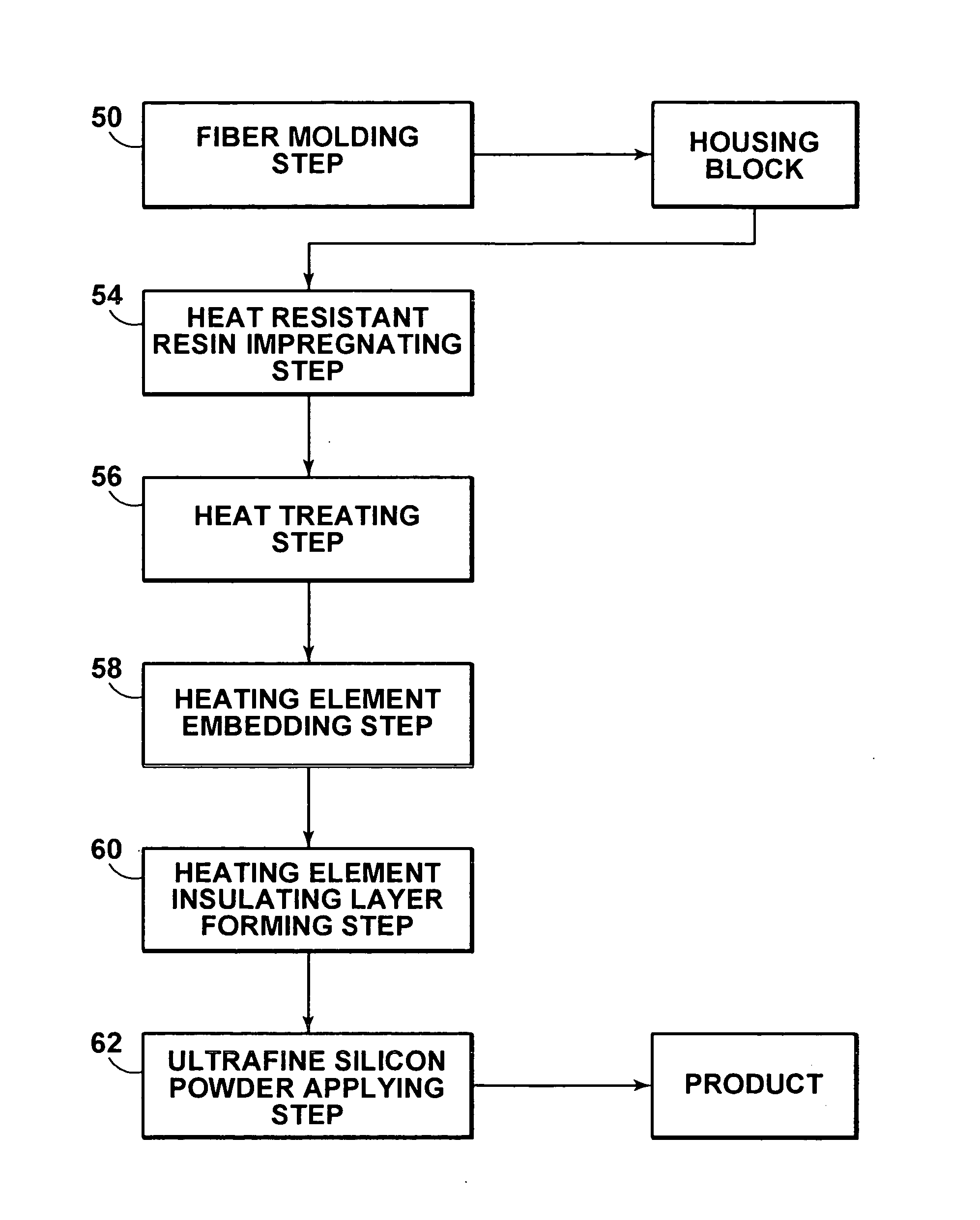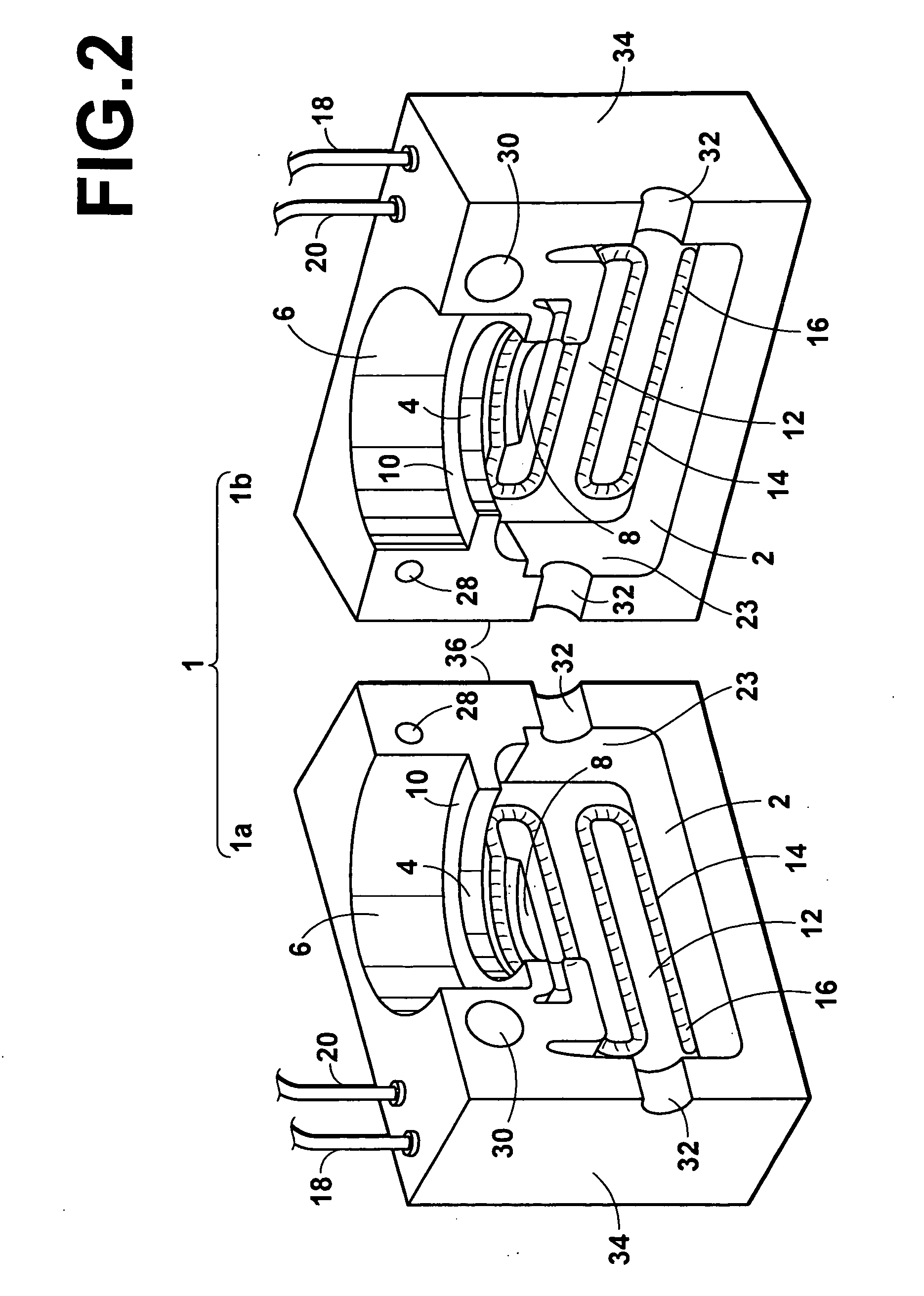Heater unit manufacturing method
a manufacturing method and heating unit technology, applied in the direction of lighting and heating apparatus, pedestrian/occupant safety arrangement, vehicular safety arrangement, etc., can solve the problems of dusty surrounding area of heating object, temperature drop in fluid as it passes through the valve, etc., to achieve energy efficient uniform heating, reduce the number of parts, and reduce the cost
- Summary
- Abstract
- Description
- Claims
- Application Information
AI Technical Summary
Benefits of technology
Problems solved by technology
Method used
Image
Examples
Embodiment Construction
[0036] Hereinafter preferred embodiments of the heater unit manufacturing method (hereinafter, simply referred to as “manufacturing method”) according to the present invention will be described in detail with reference to the accompanying drawings. FIG. 1 is a flowchart illustrating the respective steps of the manufacturing method of the present invention. FIG. 2 is an exploded perspective view of an illustrative heater unit manufactured by the manufacturing method of the present invention. FIG. 3 is a perspective view of a valve which is an illustrative heating object of the heater unit shown in FIG. 2. FIG. 4 is a drawing illustrating the valve shown in FIG. 3 with the heater unit shown in FIG. 2 being mounted thereon.
[0037] First, an open / close valve 100 having comparatively complicated contour on which a heater unit 1 is to be mounted will be described with reference to FIG. 3. The entire valve is indicated by the reference numeral 100, which is connected to fluid pipes 102 thr...
PUM
 Login to View More
Login to View More Abstract
Description
Claims
Application Information
 Login to View More
Login to View More - R&D
- Intellectual Property
- Life Sciences
- Materials
- Tech Scout
- Unparalleled Data Quality
- Higher Quality Content
- 60% Fewer Hallucinations
Browse by: Latest US Patents, China's latest patents, Technical Efficacy Thesaurus, Application Domain, Technology Topic, Popular Technical Reports.
© 2025 PatSnap. All rights reserved.Legal|Privacy policy|Modern Slavery Act Transparency Statement|Sitemap|About US| Contact US: help@patsnap.com



